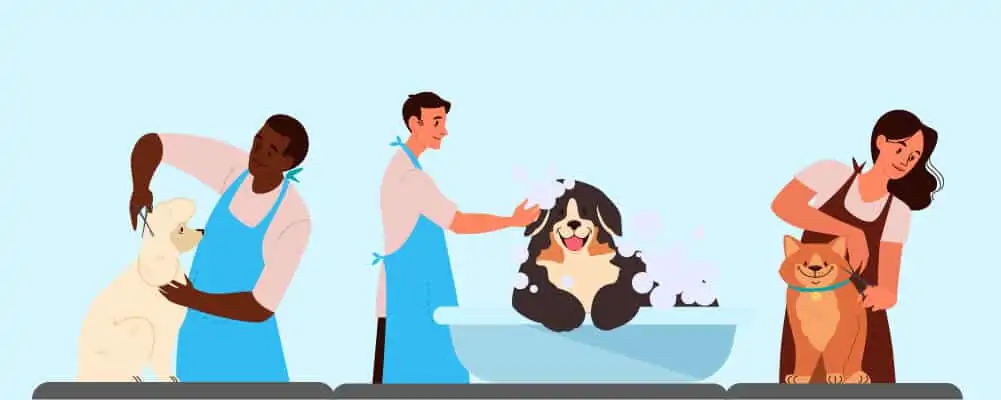A Complete Guide To What Dog Breed I Should Get

Introduction

Making the decision to add a furry four legged friend to your family is a pretty big deal! It’s very exciting, and you may be eager to start hunting for your new family member as soon as possible. Of course, it’s not just about choosing any dog – it’s about choosing the right dog and the right breed for your family.
There are many different dog breeds out there, and while every dog is certainly unique in their own way, there’s a lot that you can learn about what a dog is likely to behave like based on their breed. That’s why it’s important to do some research before getting your new family member to see what kind of dog is going to work best for your family.
Naturally, we aren’t all born with innate knowledge about the different breeds of dogs. Thankfully, we know a thing or two about dog breeds and what families certain breeds work with. That’s why we’ve written this guide! Read on for our advice on choosing the perfect dog breed for you and your family!
How Many Dog Breeds Are There?

So, exactly how many dog breeds are out there? You may have heard some names before, such as Yorkshire Terriers, or Golden Retrievers and more. You’ll be surprised to learn just how many dog breeds there are, however! They are an incredibly varied type of animal, so you are almost certain to find a dog that will suit you. Not only that, but there are new breeds emerging all the time.
First of all, it’s important to note that you can’t turn any dog into a new breed. There are guidelines out there from dog breed governing bodies like the American Kennel Club that outline precisely what it takes to make a type of dog into a recognized breed. These breeds have to meet certain standards too in order to ensure the health and wellbeing of the animal. There are criteria that must be met before a dog is a recognized breed, for instance there needs to be at least 300-400 dogs in the breed and they should span three generations at least.
Due to the sheer amount of dogs out there, they are categorized into types. For instance, you have sporting dogs, terriers, hounds, herding dogs and more. They have often been bred in the past for specific purposes.
So, onto the specific question – how many breeds are there? Well, based on the American Kennel Club guidelines, there are 190 breeds in the United States. Throughout the world there are 360 different breeds recognized, though experimental breeds are not included in this number.
As you can see, there’s a lot to choose from when you’re choosing a new pup for your family. It can seem a little overwhelming when you look at these numbers and see just how much selection there is. Thankfully, you can narrow it down by figuring out what you and your family need.
Factors To Consider When Choosing The Right Dog Breed:

So, how do you choose the right dog breed for your family? Well, there are a few different things that you need to consider. Let’s run through them, one by one.
Dog’s Size
The first thing that you should think about is the size of the dog. Your dog’s size can have an impact on a number of things, such as their required food intake and the amount of energy they need to burn.
It’s a good idea to think about your new pet in accordance with your family. Consider your lifestyle – who lives in your household? Are children often in your house? Usually smaller dogs such as papillons are good with children, whereas larger dogs can sometimes be a little dangerous around small children if they aren’t trained properly. If they are well trained, large dogs can be just as gentle with your little ones as small dogs are.
You will also want to think about how much outdoor space you have. For instance, if you live in an apartment then it may be better to get a smaller dog – in some apartments, only small dogs may be permitted inside of them. Larger dogs may need more space. You will want to think about whether you live near good walking routes too, especially if you have a very active dog.
The size is important to consider right from when they’re a puppy. Sure, the dog may be tiny as a puppy, but all creatures are small as babies. Are you the same size as you were as a newborn? Most likely not! It’s best to assume that your dog is going to get bigger too. Your tiny little labrador pup is going to grow astronomically large as time goes on, so you need to ensure that you have the facilities to accommodate him or her!
Ultimately, you need to consider the size of the dog alongside other factors.
How Active They Are
The size isn’t the only thing that you need to consider, either. Dogs can all vary in the amount of activity that they need. Some dogs will prefer to laze around on your lap all day, while others would zip around the house and run around for most of the day. Now, it’s important to note that your dog’s breed can have a huge influence on how active they need to be. All dogs are different and you’ll always find at least one dog in any given breed that’s different from how their breed dictates they should be, but for the most part a dog’s activity needs are going to be similar for every member of the breed.
Now, it’s important to think about your own lifestyle and how that will fit in with your dog. Are you a fan of going on regular walks? If you are then going for a high energy dog may be a good idea – something like a Border Collie. If you don’t think that you are going to be doing a lot of walking, then a dog like a basset hound may be better since they don’t have as much energy.
It’s also important that you are willing to pay attention to your dog and what they need, as every dog is different. If you notice that your dog is being destructive or misbehaving then there’s a chance that they may be acting this way because they aren’t getting enough exercise. As you can imagine, then, having a high energy dog can become a bit of a problem when you aren’t able to provide them with the level of activity that they need.
Are They Child-Friendly?
Another thing to think about is whether the dog breed is one that is child friendly. This may not be important if you don’t have or don’t intend to have children, but it’s especially vital if your children are still very young. All dogs have their own temperaments, so there’s not a way to predict 100% what a dog is going to be like with children, but by knowing the breed that you plan on getting you can at least make an educated guess.
There are certain dogs that don’t have good reputations for being child friendly, and are instead better at other things. It’s important to look for a dog that has a temperament similar to your family. For instance, if your children are quite outgoing then it may be a good idea to get a dog that is also rather outgoing. Children that are more shy may be better suited to a similar dog. For this reason, it’s a good idea to take the whole family to meet your new pet when you find one that’s suitable.
If the dog is highly trainable then it will be more likely to be good with children – these dogs are people pleasers, and can bond deeply with children. Sporting dogs are usually a good choice for families, as are dogs such as golden and labrador retrievers. Some professionals recommend getting larger dogs with small children, since small children don’t always initially know right from wrong and may be tempted to pull on an ear or a tail. A smaller dog is more likely to get really hurt from this, and this can easily lead to your child getting hurt in turn. If your dog is well socialized, though, then this is unlikely to be an issue, so long as your child is also taught the proper way to behave around a dog.
Other things to consider include if your child has allergies, as some dogs are more hypoallergenic than others are. If your dog is highly sensitive to pet dander, then some breeds simply aren’t going to be suitable.
Their Required Maintenance
How much maintenance does this dog require in order to lead a happy and healthy life? In many cases, your dog may require a lot of maintenance in order to maintain a good appearance, especially if the dog has a lot of fur. Dogs like golden retrievers, for instance, have long fur that regularly needs to be taken care of. Likewise, dogs with short hair and smooth coats tend to shed a lot, so you may need to get the vacuum out more often than you might like with your short furred pooch.
Another thing that you need to think about is the ears. If your dog’s ears are floppy and long then they may be more susceptible to experiencing problems like infections with the ears, so their ears need to be cleaned well in order to ward off the problem. Other dogs may drool a lot.
Their Age
The final thing that you need to think about is the age of the dog. This can largely influence what your lifestyle is going to look like, especially for the first couple of months or so. For instance, you are going to need to dedicate a lot of time and energy to puppies since they need a lot of training and love. This is especially true in the first few months while you’re still working on house breaking and getting rid of any unwanted behaviors.
You will also find that there are other challenges that come with having a puppy. You’ll have to spend time cleaning up their accidents while you’re working on housebreaking. They may also have a habit of nibbling on your furniture at first, which can be quite detrimental to your favorite table! With some time and patience a lot of problems will go away, but you need to be willing to put in the hours in order to make it work. Some prospective pet parents simply don’t have the time for it.
So, what age is best for you? Let’s start with adults. Many people don’t opt to go for an adult dog because they want the newness and big puppy dog eyes that come with a young dog, but an adult is a good fit for many families. You will get a realistic representation of what the dog is really like when you adopt an adult. You’re not going in blind like you often are with a puppy. Of course, not all adult dogs are trained so it’s worth going in with the expectation that that’s something you may still need to work on with your pooch. For the most part though adult dogs have had some level of training – it’s just a matter of getting them used to your unique lifestyle.
You could also get an older dog. Senior dogs are a great asset to any home, and are often forgotten about because they are older. Many of them are in real need of loving, stable homes too, so you’ll be making a real difference by adopting a senior dog. Likewise though, senior dogs can come with their own challenges. They often need to visit the vet more often, and may have health problems that are less prominent in younger dogs. There’s also the heartbreak of knowing that you may not have as much time with your pet as you would like. It’s rewarding but sometimes quite difficult too.
Ultimately the choice of what age to get is up to you, but there are pros and cons to each decision that you will need to think about.
How To Get Your Desired Dog Breed:

Now you may be starting to get a decent idea about the kind of dog that you want to bring into your home. All you need to do now is find the dog breed in question. This may seem pretty simple, especially considering advertisements on social media crop up all the time for dogs and puppies that are for sale or need new homes. Sure, it’s easy enough to get a new dog in many respects, but it’s not quite as easy to find a specific breed of dog. You may need to wait for quite some time before the breed that you are looking for comes up, so you may need a little patience. With that being said, here are some places that you can use to look for your new furry friend.
Visit Your Local Animal Shelter Or Rescue Group
The first option is to go to your local animal shelter or rescue group to find your new dog. These places often have a wide variety of different dogs, so there’s always a chance that they may have the breed that you are looking for.
This isn’t always a given, of course, since there’s no real way of knowing what breeds will come through the door. You can ask them to give you a call when the right breed is available, though!
There are a number of different benefits to using an animal shelter or rescue group, such as:
- Adopting often saves you money – buying a dog outright can be pretty expensive. You can save a considerable amount of money by adopting, since the pets in shelters are ones that simply need a home. Most of the initial work is done for you too, since the dog will likely already be microchipped, neutered and vaccinated by the shelter.
- Saving a life – pets in shelters don’t always have the best upbringing and have often been abandoned by their previous owners. By adopting instead of buying outright, you are giving a dog a chance at a new life in a loving family.
- No worries about housetraining – one of the best things about dogs in shelters is that many of them have been house trained before. This saves you the hassle of having to housetrain the pet on your own.
- More love than you could ever imagine – your shelter or rescue group dog just wants love and a welcoming family. If you adopt one, you are sure to get more love from your pet than you may have ever thought was possible before. It’s a bond that is unparalleled.
Naturally, there are also things that you need to think about before you adopt a dog too. You’re going to want to think about whether you’re prepared for the highs and lows that can happen when you have a rescue dog. It can be a pretty big responsibility, requiring a lot of your time and sometimes money too. If you aren’t sure whether permanently getting a new dog is the right choice for you, then it’s usually possible to become a temporary foster home so you can learn more about what your expectations are as a pet owner.
Remember too that ultimately, dogs can be unpredictable. Rescue dogs can be very loving and a wonderful asset to a family, but rescue dogs can also be hard to predict. They may have previous traumatic experiences that influence how they respond to certain things when you bring them home. For this reason, it’s a good idea to ensure that you don’t leave your dog with your children unsupervised. Two unpredictable things in a room together isn’t always a good idea! Even if you think you know everything there is to know about your pet, it’s still a good idea to be cautious just in case.
Also remember that your dog may not trust you straight away – you are going to need to have patience. Allow your dog to have the time that they need in order to adjust. It will take them a while to get used to their new environment, the people around them and the factors that come with their new life, including rules and training. It’ll usually take them at least three months to get used to all of the nuances of their new life.
One of our favorite breeds the beautiful Goldendoodle is sometimes found in rescues – and there specialist Goldendoodle rescues in North America for rehoming them.
From A Local Breeder
Alternatively, you may find that the dog you are looking for is available with a local breeder. These people are usually known for breeding certain breeds of dog, so they’re a good place to look if you have a specific dog in mind. Of course, it may take a while for them to get a new litter!
Now, it’s important to mention that there are some pretty seedy people out there, such as the kinds that will make puppy mills, which aren’t ethical. For this reason, you need to keep a few things in mind when you’re looking for a breeder. Here are some things to consider before choosing a breeder.
- Make sure they’ve done the health checks
Any breeder worth their salt will have done health checks on the dogs in question before handing them out to their new owners. You should ask the breeder for proof that they’ve done the checks. If you are unable to do this then you can check them through the internet looking for the registered name of the dogs.
- Check the Documents
Before you walk away with your new pup, you should always make sure that you are checking all of the documents. Ensure that it’s all legit, checking that they are registered and that the breeder has done what they have said that they have done. Don’t be afraid to ask questions, either – a good breeder should be able to answer you comfortably without any hesitation.
- Ask To See The Mother
If you are unable to see the mother, then it’s not a good idea to take a puppy from the litter. In most cases it won’t be possible for you to see the father of the puppies, though you will sometimes find a breeder that will give you the details of the stud if you ask for them.
Look at how the mother interacts with the litter, as this can tell you whether she is the real mother. Check her condition, as you don’t want to buy from a puppy mill. It should also ring alarm bells if the breeder won’t let you see the mother.
Things To Keep In Mind When Choosing A Dog Breed

So now you know all about choosing dog breeds and where to get your pet from, but what else do you need to know? Well, it’s a good idea to keep these handy hints in mind when choosing your furry friend!
What Is The Purpose Of The Chosen Breed
The first thing to note is that you should consider the purpose of the chosen breed. What we mean is basically that every dog is bred for a specific purpose. There are some dogs, such as border collies, that are bred for herding sheep. Some are bred for hunting, whereas some are mainly bred for domestic purposes. Some are designer breeds that have emerged in recent years.
Why is this important? Well, the purpose of a dog’s breeding can determine how they behave, in many respects. If you are looking for a dog to go on your ranch, then you would be much better suited to a herding dog. If you want a dog to accompany you on hunting trips, then a hunting dog is a better choice.
A herding dog may not be so suitable if you live in a tiny apartment where they can’t roam, however. Think about the purpose of the dog before you choose the right breed for you. Sure the dog looks cute, but will they truly be happy in their new home if they can’t do what they were born to do?
Take Your Time. It’s A Long-Term Decision
Furthermore, you really should take your time when trying to choose a dog. We get it – when you’ve decided that you want to get a new pet for your home, you want it like yesterday. You don’t want to wait around because you are so ready for your new life with your pet. You really should take some time to truly weigh up your options though.
Consider how much you are willing and able to give to this new member of your family. A dog isn’t like an ornament that just sits in your home and looks pretty – it’s a member of your family that requires love, attention and sometimes a little bit of patience. They aren’t always easy to deal with, especially at first! It’s certainly worthwhile to open up your heart to a dog, but these are all things that you need to consider before buying.
Furthermore, it’s a smart idea to take your time and think about what kind of dog you want to have for your family, since it really can change the whole dynamic. Don’t just choose a dog at random on a whim – give it some time and thought before making a decision. Both you and the dog will be happier for it.
Whether You Can Afford The Breed
Think about whether you can afford the breed too. You need to think about the upfront costs – breeders know that people who are going to be good dog owners will pay quite the pretty penny for their new pet. We’re talking thousands of dollars, sometimes. So you need to make sure that you have the money for that.
One of our favorite hypoallergenic breeds is the Goldendoodle. And buying a Goldendoodle will cost you thousands of dollars. You need to factor in high initial costs for some breeds.
That’s not all, either. You will also need to think about the day-to-day costs. Your dog will need pet insurance, food, water, gear for walking them, treats and so much more. You’ll also need to pay for vet bills which can be rather expensive. If you can’t afford the dog then it may be a good idea to hold off for a while before bringing your new pet into your life.
Do Your Research Well On The Chosen Breeds
Finally, make sure that you do your research. Work out whether your dog is really going to work for your chosen lifestyle. If you can’t commit to lots of walks a day, then perhaps an energetic breed may not be the best fit for you, for example.
- Even some of our favorite breeds like the Cavapoo have some bad things about them. No breed is perfect!
- Consider checking lists of pros and cons like the one we made for the Maltipoo breed.
- Another way to compare breeds is to look for breed comparisons once you have narrowed it down to two. For example, our Goldendoodle vs Labradoodle breed comparison.
- Or you can go deep on a single breed (ie. What is an Irish Doodle)
- Or you can just check a mega list of family friendly breeds like our Best Poodle Mixes for Families listicle.
These are all things that you need to think about. Have a look at the previous section of this article to see some things that you need to consider. When you can think of a breed that may interest you, do your research into that breed so you can learn more about the responsibilities of owning them.
Summary

Congratulations – you are now ready to start looking for your newest furry companion! Choosing a new dog is such an exciting time, and it’s a lot of fun to bring them home, but making the considerations above will help you to make sure that you make the best possible choice for you. We hope that you can find the perfect breed for you and your family!